Over the last decade, data has gone from being a simple synonym to information to something more. Much like the gold rushes or the oil findings of the 19th century, data has become a highly valuable commodity and it has captured the public’s collective consciousness. Every industry in the world is looking for ways to harness data. Hundreds of large corporations have appointed Chief Data Officers and created entire divisions whose goal is to find ways to improve results through data, and governments and public institutions are working on digitally transforming themselves to become more data-driven.
As data has become increasingly central to business, politics, and life in general, governments have taken action to regulate its uses and protect the people to whom it belongs with landmark legislation such as the EU’s General Data Protection Regulation.
Virtually everything we do in our personal lives generates data of some sort, whether it is using public transport, browsing the internet, or shopping. And given that much of our activity involves money, a large amount of the data we generate can be classified as personal financial data.
The movement that aims to harness that personal financial data is known as Open Banking, and with the regulatory support of the European Union’s new payment services directive (PSD2), its goal is to make that data one of the driving forces powering the next generation of technological innovation in consumer banking and financial services.
The raw power of users’ financial data and the movement unlocking it
Each time a person buys something online, goes to the grocery store, pays a bill, or receives their salary, they generate financial data points. The resulting information tells a (very intimate) story about each user. And these stories have a lot of business value because they involve one of the most important aspects of life: money.
However, unlike other industries where there is no clear consensus on how to harness, administer and distribute this data, both regulators and the industry have embraced the concept of Open Banking.
Open Banking’s proposition is simple: with the users’ prior consent, banks and other financial institutions must share the user’s financial data with authorized third-party providers. In turn, companies of all sizes can use it to improve financial services for everyone, be it through innovation, enhanced efficiencies, or more competition.
Empowering consumers to better understand their finances
A Personal Finance Management (PFM) app helps users better understand and manage their money. However, instead of asking the user to input their expenditures manually, the firm leverages Open Banking to connect directly to the user’s bank account, significantly reducing friction for the user.
From there, the app will help customers get a clear overview of their spending habits, empowering them to make better financial decisions in the process. More interestingly, the app can use algorithms to suggest financial products that fit with the user’s habits.
Other tools liberate bank customers from dated proprietary user interfaces by allowing them to connect to modern UIs. The bank customer can interact with their accounts through a third-party interface that they find easier to understand, perhaps seeing products offered by their bank that they would have otherwise missed. Meanwhile, the customer’s deposit stays safe within the financial institution, giving the end-user peace of mind.
Reimagining banking on the back of existing infrastructure
Some newcomers go a step further, reimagining banking from the ground up. Pulling personal financial data from various sources, these firms create ‘banking as a service‘ using different plug-and-play technologies. These companies forego the burdens of building banking infrastructure in-house. Instead, they use a collection of different third-party-providers to assemble a viable alternative to established financial institutions.
Democratizing payments
Personal financial data is also driving significant changes in the payments industry. As McKinsey reported, Open Banking will create faster payments and more competition. These forces apply downward pressure on pricing, which poses a threat to the traditional card issuing and acquiring companies. Clever payment service providers could also develop engaging ways for consumers to make payments, allowing the firm to use the generated transaction data to sell even more products. Together, consumers and merchants will stand to benefit from more choices and overall lower transaction costs.
Disrupting monopolies and boosting corporate innovation
Open Banking and the subsequent data it releases won’t only benefit startups. Established firms, while having to react to market disruption, can also leverage personal financial data to enhance their value propositions. By employing tools to analyze their users’ data, they can significantly improve their internal offerings.
With enhanced KYC, banks and other lenders can make more personalized risk assessments. With this information, they can create loans tailored to the user. Since they better understand the potential risks before lending, the chance of default decreases. The balance sheet of the lenders then stays healthier while consumers get access to better credit products.
These same insights will allow a bank’s marketing department to target its customers with specific products more accurately. For example, a bank could see that a client suddenly started making purchases at baby stores. Using this information, the marketing department could infer that the customer is expecting a child. The bank could then propose a tailored life insurance product to the parents-to-be to protect their growing family.
Of course, with startups hot on their tails, existing firms wanting to maintain their market share need to take note. According to KPMG, banks in the EU are particularly susceptible to disruption from Fintechs. The regulators within the bloc made it clear: the status quo of banks monopolizing consumer financial data is a thing of the past.
Furthermore, as global interest rates continue to fall, banks will need to look elsewhere for much-needed revenue. John Detrixhe writing for Quartz detailed how continuously lower yields are forcing banks to seek other business lines outside of their traditional ones.
In an Open Banking world, survival for the banks means embracing user data in the same spirit as the technological upstarts. In this sense, banks have a clear advantage, as the majority of user data originates with them. Leveraging that information in-house will generate revenue for the bank in novel ways, protecting them from interest rate risk while keeping existing customers within their ecosystem.
Common standards and the data ‘power grid’
Although immensely powerful on its own, electricity does not naturally go from creator to producer (at least not without shockingly dangerous consequences). Before we could harness electricity to transform how our societies function, standards had to be created to govern its safe use and distribution.
These guidelines created a ‘sandbox’ for scientists, inventors, and engineers, helping to create the world as we know it. Without these rules, there wouldn’t have been a global power grid and human development would have been slowed by a factor of many.
Indeed, much in the way that standards such as current, voltage, and delivery made the distribution and use of electricity uniform, regulations such as the European Union’s PSD2 fosters innovation under a set framework. Absent of these directives, the mechanisms for transferring and using personal financial data would be ambiguous. With ambiguity, innovators would likely stay away since whatever benefits they could achieve wouldn’t be worth the regulatory guesswork.
In this sense, we can see that, while complementary, PSD2 and Open Banking diverge slightly. Open Banking is the innovative spirit that envisions how financial data can change the world. PSD2 and other regulatory frameworks look to enable the Open Banking movement by standardizing the flow and usage of this information. Indeed, without the regulatory action of PSD2, Open Banking might end up being just another tech buzzword with no purchase in the real world.
Like with electricity, there needs to be an intermediary connecting the generators with the innovators. This vital role will entail translating different proprietary formats, then shipping it onwards, on-demand, through standardized mediums like RESTful APIs. These firms will no doubt be a byproduct of the liberation of personal financial data through Open Banking.
Open Banking promises to bring great changes to the way we approach finances. Ray Daly of Accenture wrote that the opening of data by Open Banking will give light to brand new ecosystems. We couldn’t agree more.
Ultimately, consumers are the biggest beneficiaries of this rush. Instead of being tied to one bank, we will have a buffet of choices, filling our financial-needs plate with services that match our tastes. Beyond the slick user experiences, consumers will benefit financially. The Open Banking society of the UK stated in June of 2019 that the British public could gain up to £12B per year by sharing their financial data with innovators.
In contrast to the adventuring people that participated in the Gold Rushes of the 19th century or the inventors that first leveraged electrical power, we consumers will be the ones powering this transformation by using our financial data to fuel the next generation of financial products and services. In turn, Open Banking will have a powerful impact on our economy. After all, data is the currency of the future.







